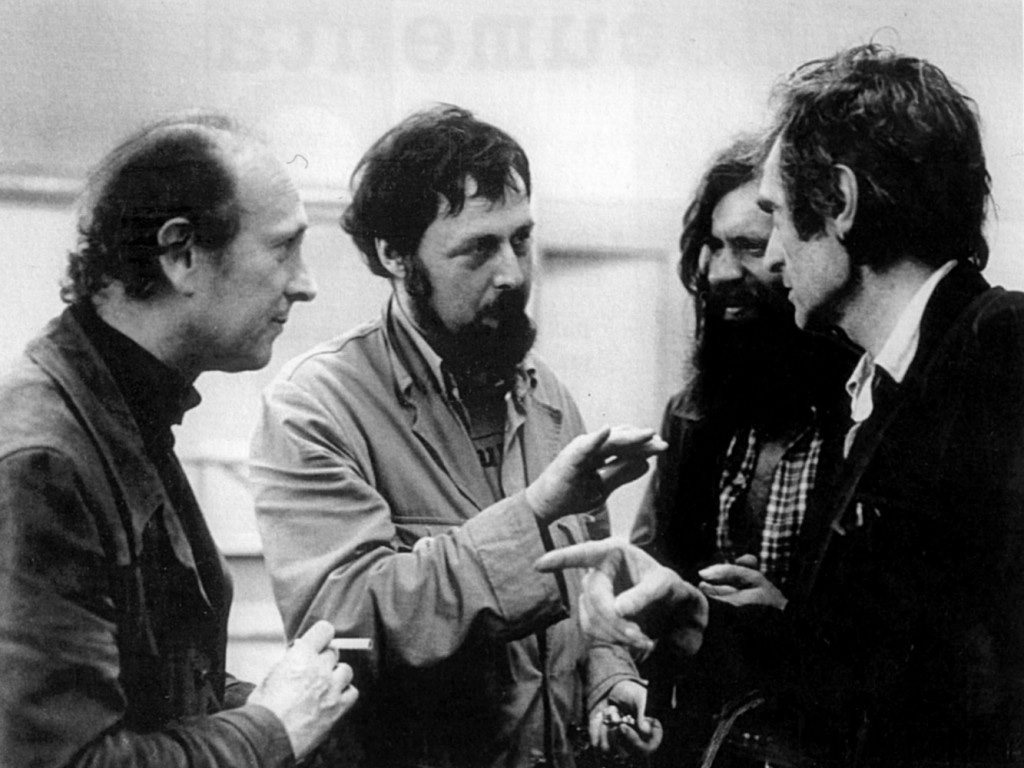
Harald Szeeman talking with fellow artists at the Bern Kunsthalle (1969); top Chiharu Shiota, The Key in the Hand, Venice Biennale (2015)
The curator, the artists’ co-worker
To visit a major contemporary art exhibition today is like attending a series of very short spectacles comprising visually striking performances or displays. This search of visual impact in contemporary art is making major international visual arts venues such as the Venice Art Biennale, extremely interesting. In the context of our upcoming trip to visit the Venice Art Biennale 2017, we have invited Roger Sutcliffe to write about the origin of the innovative ways in which contemporary art is now displayed. Who was the person behind this idea and why?
There are moments in art and in art history that are so crucial that they affect the course of how art is made and shown. The exhibit When Attitudes Become Form at the Kundsthalle, Bern (1969) was one such moment, gaining a special place in the curatorship for understanding contemporary exhibitions. This exhibit was indeed a “late-20th-century landmark”. The culprit? The curator Harald Szeemann.
Harald Szeemann was a visionary and is credited with creating the modern-day “great exhibition”. He is also regarded by many as the most important postwar curator. He travelled widely and got inspired by so many exhibitions and visited many artists and gallerists that he decided finally to present only “New Art” and in a new way. He characterized the crowded exhibition as a “direct expression of a climate of revolt, experimentation and freedom”.
Tightly packed into the Kunsthalle (the “art room”) and an annex, works were seen side by side. The museum was turned into a workshop for cultural interaction. The exhibition included 69 European and American avant-gardists of the day. Only 40 artists had works physically exhibited, although 127 works were included in the catalogue showing earthworks, land art, geometric abstraction, “process art” at their final conceptual stages. Even the catalogue was considered a work of art because of its 14 artworks in the various ways the pages were designed.
Szeemann aimed to show and document the creative thought in the process. He desired to break down the “triangle in which art operates” – studio, gallery and museum. He wrote: “Today’s art is no longer the articulation of space but human activity, the activity of the artist has become the dominant theme and content…. Artists are in no way object makers, they aspire to freedom from the object. The artistic process itself is to remain visible in the end product and in the exhibition…”
Szeemann’s notorious exhibit demonstrated the “curator’s transformation from a scholarly art historian, or guardian of a collection, to artists’ co-worker, a figure completely engaged in the conception, production, presentation and dissemination of the art of his or her own time”. The show was a true reflection of conceptual art which was happening in the Western world. The exhibit itself was a work of art!
Roger Sutcliffe is a painter and printmaker (www.rogersutcliffe.ca) and is studying modern and contemporary art history with Prof. Yves M. Larocque.


0 Comments